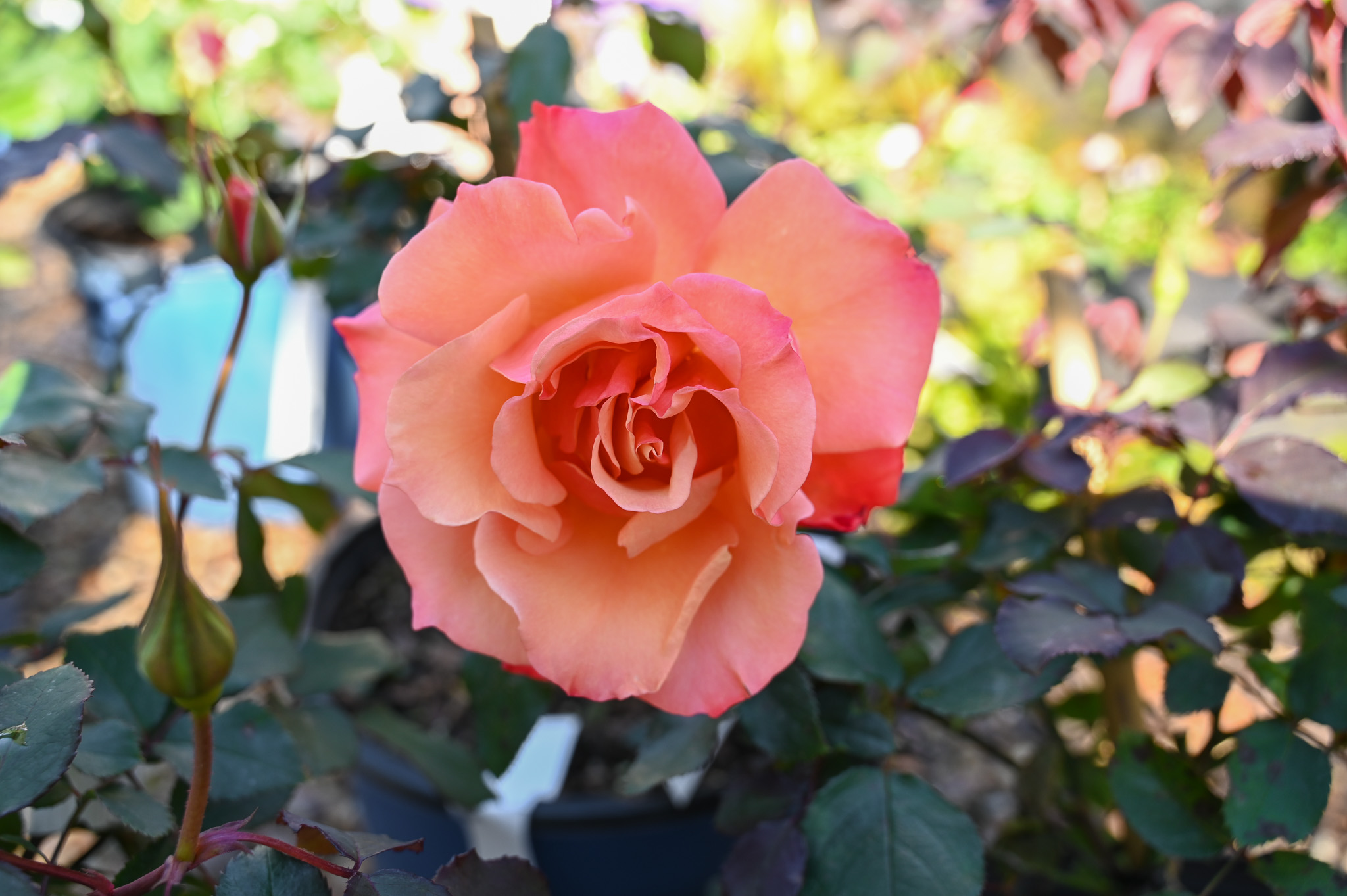Every spring, Tallahassee Nurseries comes alive with a stunning array of roses in every color, shape and fragrance imaginable. For a few months, we see rose after rose ride away in little red wagons, destined for a new home in gardens across the city. If you’ve found yourself the proud parent of a new rose this year, read on for everything you need to know to keep your roses in tip-top shape.
Info at a Glance
1 Roses Need Full Sun
2 Pick a Site w/ Well-drained Soil
3 Plant at the Right Height
4 Amendments Go On Top
5 You Absolutely Must Fertilize
6 Mulch is Your Best Friend
7 Don’t Let Them Dry Out
8 Treat Problems as Soon as You Can
9 Stake Your Rose to Stand Tall
10 Prune to Encourage Blooms, Manage Shape & Size
1. Roses Need Full Sun
We cannot stress this enough. Roses must have at least 6 hours of direct sun to live up to their potential. The prettiest roses receive direct sun almost all day. If you only have shade, roses are simply out of your grasp.
2. Pick a Site with Well-Drained Soil
Roses cannot thrive in heavy or wet soil. If your soil is wet, spongy, or holds water after rain then it is not suited for roses. If you must have roses in such a site, grow them in containers where you can better control the moisture levels.
3. Plant at the Right Height
Planting a new shrub too low can cause problems that never resolve. Dig your hole 2-3 times wider than the root ball, but the depth of the hole should be just enough for the top of the rootball to be level with, or slightly above the surrounding soil.
4. Amendments Go On Top
For a boost to your new roses, spread compost around the plants, on top of the soil, as if it were mulch. Mixing amendments into the planting hole may offer fewer benefits than top dressing, and even cause problems with soil moisture within the roots zone.
5. You Absolutely Must Fertilize
Roses need a regular supply of nutrients to be able to produce all those beautiful blooms. Espoma Rose Tone is an excellent organic fertilizer that supplies nutrients and builds soil. Apply organic fertilizer (available in the Garden Showplace) every 4-6 weeks from February through late summer. Alternatively, you may use a slow release fertilizer that only needs to be applied 1-3 times per year, depending on the release rate of the product. We have seen truly impressive results from Nutricote, a premium slow release fertilizer used by professional growers.
6. Mulch is Your Best Friend
Mulch protects the soil and prevents erosion and compaction from foot traffic. Mulch helps to keep the soil from drying out, it keeps the soil cool, and it suppresses weeds.
We strongly recommend the use of natural mulch, like pinestraw, pine bark, wood chips, or leaves. Anything that breaks down over time will slowly build soil quality.
7. Don’t Let Them Dry Out
Sadly, there are no universal watering instructions. How much and how often to water depends on the precise conditions of your soil, your location, your method of watering, and the weather. Close observation over time is the only way to learn what your plants need. If you notice your plants wilting, they’ve become too dry and you need to water more often and/or more heavily. Soaker hoses are an ideal way to water roses because they keep the leaves dry, which helps reduce disease.
8. Treat Problem As Soon As You Can
Mulch protects the soil and prevents erosion and compaction from foot traffic. Mulch helps to keep the soil from drying out, it keeps the soil cool, and it suppresses weeds.
We strongly recommend the use of natural mulch, like pinestraw, pine bark, wood chips, or leaves. Anything that breaks down over time will slowly build soil quality.
9. Stake Your Rose to Stand Tall
Shrub Roses don’t need any staking, but those fancy Hybrid Tea, Grandiflora, and Floribunda Roses could use a helping hand (Climbing Roses will need a trellis or fence). Heavy clusters of blooms can cause long stems to break or flop on the ground. You can use anything from simple bamboo stakes to ornate metal obelisks to keep the branches of your roses supported. This will make the blooms more prominent and enhance airflow around the plant, which reduces the likelihood of disease.
10. Prune to Encourage Blooms, Manage Size/Shape
Pruning can be intimidating to the novice gardener, but this is a skill you have to learn by doing. Remove all finished blooms and bloom clusters by clipping the stem a few leaves back from the old flower. You can trim long shoots anytime to create a fuller plant. Roses can be trimmed hard around Valentine’s Day to maintain a smaller size and encourage lots of new growth. Plants cut as low as 12-18” will explode with strong stems that produce tons of bold flowers.
We won’t sugar coat it, maintaining top quality roses is a lot of work, but you don’t have to do everything perfectly to enjoy beautiful blooms. Do what you can, the more the better, and make careful observations of your results. Start small with an easy-care shrub rose or just a few fancy roses. You’ll learn more from doing it than you ever can from reading about it. So get out there and give it your best shot.
Happy Gardening!
This article was written by Jonathan Burns (Tallahassee Nurseries Outdoor Manager, FNGLA Florida Certified Horticulture Professional)


